Purushartha-Dharma Artha Kama Moksha is the four fundamental qualities, better known as Purusartha in Indian culture and tradition, balancing the wheel of life.
These are the fundamental ideas in Hinduism and allude to the four great objectives of human existence.
Basically, the whole idea lies under the heading of Puruṣārtha.

Each one of the four Purusarthas is notable, yet Dharma is viewed as more significant than Artha or Kama in Hindu philosophy in instances of contention.
In contrast, Moksha is viewed as a definitive ideal of human life.
Simultaneously, this isn’t an agreement among all Hindus, and many have various understandings of the progressive system.
Purushartha-Dharma Artha Kama Moksha meaning
The four puruṣārthas are
- Dharma means righteousness, virtues, and moral values.
- Artha signifies prosperity, monetary qualities, and economic values.

- The Kama states pleasure, love, and psychological qualities.
- Moksha signifies freedom and otherworldly qualities.
Dharma
It implies practices that are according to the order that makes life and the universe possible.
Moreover, it incorporates religious obligations, moral rights and duties, laws, ethics, and the right method of living.
Hindu dharma incorporates the strict obligations, moral rights, and obligations of every person, just as practices that empower social order, right conduct, and those that are virtuous.

Dharma is what all current creatures should acknowledge and regard to support concordance and order on the planet.
It is the pursuit and execution of one’s inclination and genuine calling.
Artha
This implies the “means of life,” and assets that empower one to be in a state one needs to be in.
Thus, Artha joins wealth, profession, activities for a living, financial security, and economic prosperity.

Therefore, the legitimate quest for artha is viewed as a significant point of human existence in Hinduism.
Kama
It implies needs, wishes, energy and passion, feelings and emotions, the aesthetic delight of life throughout everyday life, warmth, or love, with or without sexual connotations.
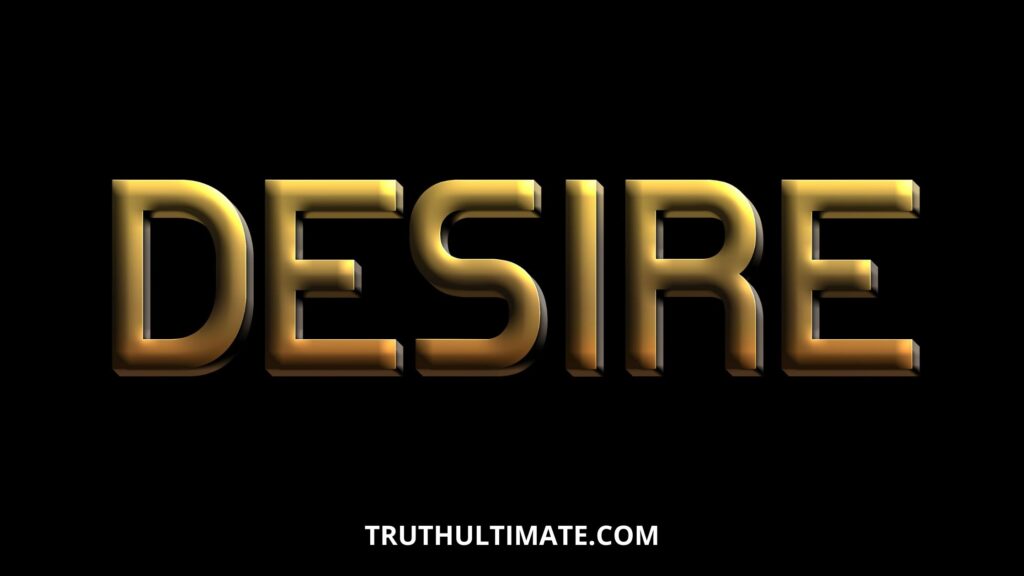
Kāma is explained as “adoration” without disregarding Dharma (moral duty), artha (material success), and one’s excursion towards Moksha (otherworldly freedom).
Moksha
This means liberation, freedom, or release.
In certain schools of Hinduism, Moksha implies independence from saṃsāra, the pattern of death and resurrection.

At the same time, some other different schools hint at Moksha as an opportunity, self-information, self-acknowledgment, and freedom in this life.
Purushartha meaning
This literally means “object of human pursuit”.
The term is gotten from two Sanskrit roots; Purusha, signifying “individual,” and artha, signifying “reason” or “objective.”
As such, Purushartha can be interpreted as the “object of human pursuit” or “motivation behind people.”
Man is a reasoning creature, and the entirety of his activities have some end or reason behind them.
We can recognize good and bad conduct based on friendly qualities which are pervasive in the public arena.
Society sets out the norm of conduct and allows human activities which are the right way.
The norm of conduct additionally limits human activities which are socially thought to be wrong and ill-advised.
The hypothesis of Purushartha decides the qualities and an estimating pole as per which human activities are to be performed or stayed away from.
In a real sense speaking, Purushartha implies those activities which are legitimate and right.
The point of the life of an individual is controlled by the tenet of Purushartha.
It additionally chooses the course of life of man and sets down standards and qualities for the standards of conduct.
Purushartha signifies “Purusharthate Purushartha”, which are the endeavors made by the person to accomplish the points, objectives, and extreme upsides of life.
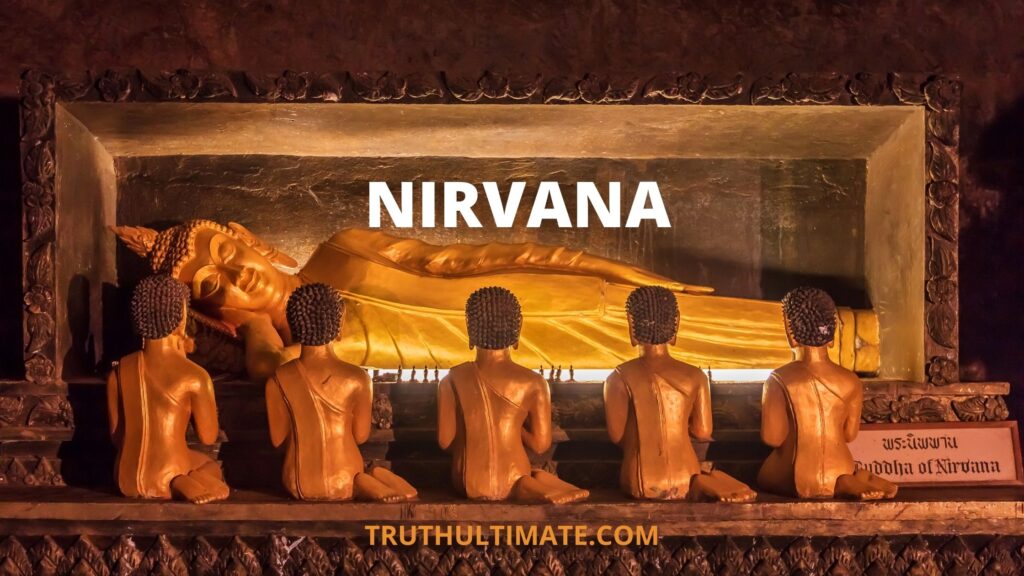
For example, a definitive finish of Hindu culture is to achieve ‘Moksha’ or salvation, and thus, man ought to act so that this point might be accomplished.
By Purushartha, we mean the compatibility of those activities which lead to the satisfaction of socially supported qualities and objectives.
The hypothesis of Purushartha in this manner coordinates material cravings and profound life.
It likewise attempts to fulfill the sex of sense in man, his affection for force and property, his hunger for creative and social life, his strive after a get-together with Paramatma.
It appreciates life overall, its expectations and goals, its acquisitions and satisfaction, its sublimation and spiritualization.”
Purushartha, as per Hindu Shastras, is the premise of Human life, and it is to be viewed as the premise on which the existence of a man turns.
It is a combination of this experience. It organizes a man’s exercises for the acknowledgment of otherworldliness just as for the upkeep of everyday life.
The hypothesis of Purushartha hence covers the complete existence of human beings.
Purushartha Gita
The work of Purushartha in Gita is in 21 verses. Bhagavad Gita has wonderfully held the essence of the basic concepts of life.
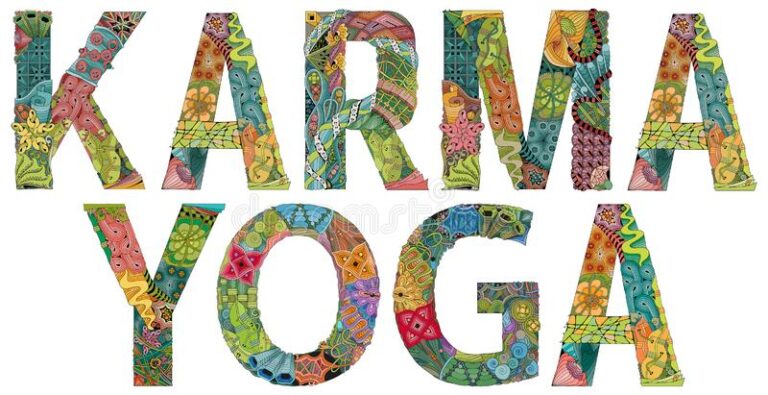
The Gita has 18 sections, and of these, the initial six are about “karma yoga” and “jnana yoga.”
Sections seven to twelve discussion about bhakti-yoga. Parts 13, 14, and 15 discussions of the Supreme One are to be looked for. The last three parts talk about Dharma.
Purushartha UPSC
One of the primary ideas which underline the Hindu disposition to life and day by day direct is that of the four closures of man ( Purusharthas).
The tenet of Purushartha is the essential standard of the Indian moral system.
Four Purusharthas are to be accomplished by a man in this world. These are Dharma, Artha, Kama, and Moksha.
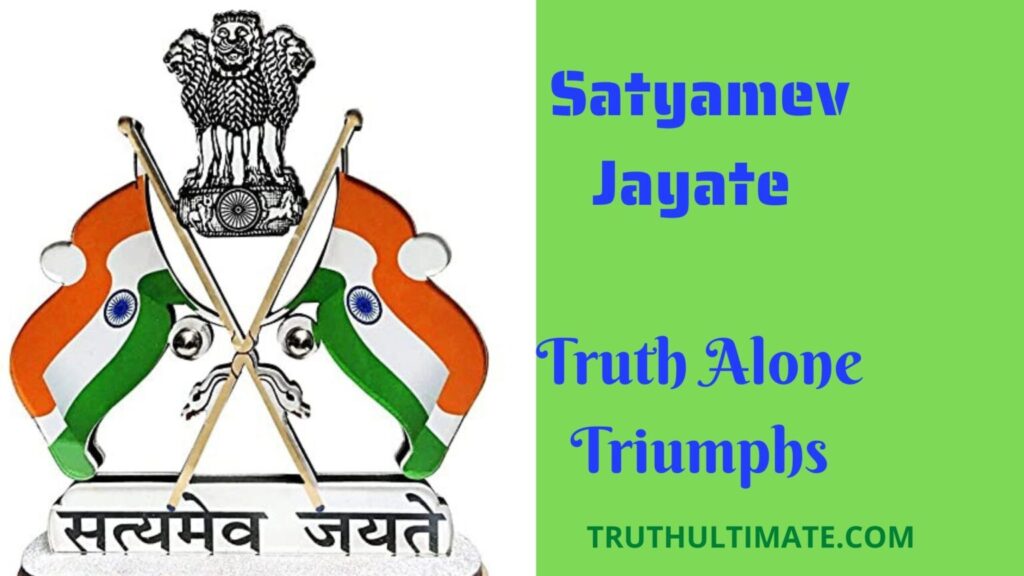
The first of these is portrayed by contemplations of righteousness, virtue, and duty.
This is called Dharma. There are two different exercises, be that as it may, through which a man tries to acquire something for himself or seek after his pleasure.
At the point when the object of this action is some material addition, it is called Artha; when it is love or delight, it is Karma.
At long last, there is the renunciation of these exercises to dedicate oneself to strict or otherworldly exercises fully intent on freeing oneself from the common life: this is Moksha.
Dharma identifies with the utilization of laws that are the premise of life and society.
The Kama identifies with the achievement of joy, and it is a characteristic propensity.
Riches or Artha is the method for satisfying every one of the cravings of man in this world.
From Dharma issues benefit and joy, one achieves everything by Dharma. It is Dharma which is the embodiment and strength of the world.
Dharma ( life obligation ), Artha ( abundance ), and Kama ( sex ) identify with objects of this world.
These are called tri-Varga. Dharma implies moral ideal, Artha connotes actual means, and the Kama means crucial cravings of man.
Moksha is the fourth Purushartha and is similarly significant for man. Now and then, tri-Varga was deciphered as intended to Moksha by the Hindus.
Equivalent accentuation on the four Purusharthas is exceptionally fundamental for a fair and sound public activity.
History had numerous occurrences in its record when balance among individuals and society was lost inferable from unjustifiable accentuation on one Purushartha or the other.
Indian morals lay due to accentuation on these mental parts of human existence, as were the Indian sages.
Securing the chance of such episodes, they put due accentuation on all the Purusharthas similarly.
Along these lines, the plan of four Purusharthas makes the Indian lifestyle adjusted and is without disparity.
What are the four legitimate goals of human existence?
Most religions have a type of objective or end as the main priority for their disciples.
Hinduism spreads out four particular objectives for consistent Hindus to reach during their lives.
These four objectives are known as the Purusha or Purusharthas.

Purushartha is an idea that shows up in the old Vedic writings. Purushartha isn’t only a word out of antiquated occasions.
The idea of these four objectives controls the existence of loyal specialists of Hinduism today. And, these are the four legitimate goals of human existence.
Dharma:
The human objective of Dharma can be considered as an undetectable type of abundance.
It shows in our day-to-day existence as favorable luck or best of luck and adds to our prosperity.
The advantages can be either Artha (Security) or Kama (Pleasure).
Artha:
Artha represents all types of safety throughout everyday life: riches, influence, impact, and fame.
For people, then again, there is no closure point. There is no limit to the feeling of need.

The perpetuation of human battles to satisfy their needs can be seen by examining encounters.
This battle to have a sense of safety by seeking abundance, force, impact, and popularity is interminable.
Kama:
The Kama represents all types of erotic delight. Food, travel, sex, music, when sought after exclusively for delight, fall under the Kama.
It’s the following stage after Artha (Security). When an individual has a sense of safety, and if the person has the means, they seek delight (Kama) in light of their preferences.
Creatures likewise look for delights and solaces. In any case, their interest is directed by senses and pre-modified conduct.
Moksha:
Moksha, similar to Dharma, is a pursuit impossible to miss just to people.
Indeed, even among people, Moksha is a pursuit followed by a couple.
These couples perceive that what they need isn’t greater security or delight or Punya, however independence from every “limiting” desire, independence from the feeling of instability.
Moksha is an inward opportunity, freedom from subjugation or connection to Dharma, Artha, and the Kama.
What are the four aims of life?
The Purusharthas are the intrinsic upsides of the Universe: Artha (financial qualities), Kama (delight), Dharma (honesty), and Moksha (freedom).
The Purusharthas are the outline for human satisfaction.
- Working with them assists you with making a satisfyingly adjusted, significant life at the most profound and most comprehensive level.
- They offer a way for assessing your life and using sound judgment. Realizing your objectives carries importance to your profound practice.
Furthermore, Purushatha signifies the questions like, “Am I dealing with my life in a manner to help my profound development?” and ‘What do I outrageously need at the level of my Soul?”
The first Vedic messages just recommended the three objectives of Dharma, Artha, and the Kama.
In the later Upanishadic time, when individuals started to look for higher cognizance, the fourth objective of Moksha was added.
The initial three are fairly intertwined, it is felt that the “right activity” of Dharma is a fundamental prerequisite for Artha to be significant.
While on the other hand, the bounty of Artha will be expected to help the Kama.
The way to freedom or edification of Moksha is upheld by the agreeable collaboration of Dharma, Artha, and the Kama.
Dharma
Bhagavad Gita states, “The best abandonment of Dharma is to abandon the defenseless in their period of scarcity.”
Dharma implies truth, the correct method of living, and human practices thought-about vital for the request for things on the planet.
On a more excellent scale, it alludes to the vast law or decides that made the universe from mayhem.
On an individual level, you can consider Dharma your actual reason throughout everyday life or the moral premise you carry on with your life. It is too:
- Being mindful in your activities, words, and contemplations.
- Having empathy and affectability to the necessities of others.
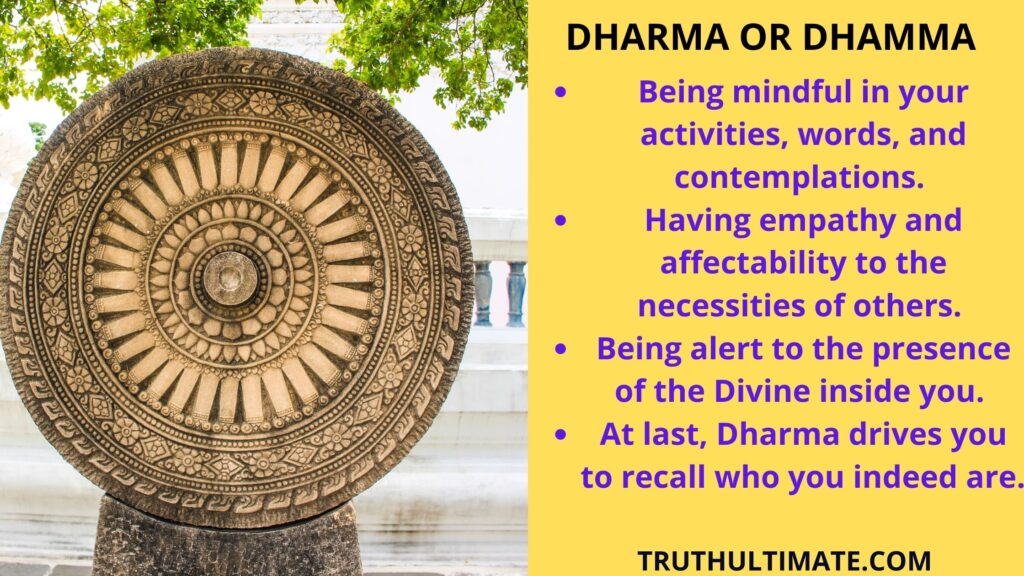
- Being alert to the presence of the Divine inside you.
- At last, Dharma drives you to recall who you indeed are.
Dharma additionally brings strength and request, a day-to-day existence that is legitimate and amicable.
Then endeavoring to make the best decision, to be temperate, to be useful to other people, and to cooperate effectively with society.
The Bhagavad Gita additionally says, “Better your own Dharma through imperfect than the Dharma of another done perfectly.”
This implies that you need to track down your own reality and even though you may commit errors en route, this is as yet desirable over attempting to duplicate others.
Dharma is viewed as the first of the Purusharthas because Artha and Kama can undoubtedly become reckless without it.
In any case, Artha and Kama, when adjusted, additionally serve to help your Dharmic Path, and in the long run, your outward Dharma drives you to the Moksha.
Artha
Artha is the security of having the material solace you need to live on the planet effortlessly.
While a few groups believe that to be profound intends to be poor, Artha isn’t tied in with dismissing the world.
However, being happy with the things you own. Instead, it’s to live ably in a universe of material articles that exist for your advantage.
Artha is one of the fundamental human respects—to have sufficient resources to live on and care for your family without accumulating or being ravenous.
Artha gives the establishment to Dharma and Kama.
Without flourishing and security in the public arena or at the individual level, both good life and exotic nature become troublesome.
Nonetheless, it’s significant that your “common achievement” doesn’t abuse the ethical duty of your Dharma and your excursion toward Moksha (profound freedom).
Artha guides you to pose the inquiry, “What do I see as genuinely important?” As we all know that the, needs change from one individual to another.
Artha remembers everything for your current circumstance that permits you to carry on with a satisfying life and the way to accomplish it.
It incorporates information, companionships, love, profession, abilities, great wellbeing, and flourishing.
At last, Artha is the quest for exercises and means essential for a euphoric and pleasurable life.
Kama
The craving for delight is the thing that drives human conduct. An existence without joy and pleasure is empty and void.
The Kama identifies with this joy and pleasure but, on the other hand, is craftsmanship, music, magnificence, love, closeness, friendship, association, and generosity.
It’s what carries a feeling of pleasure to your life. The right sorts of delight lead you toward your Dharma and assist you with satisfying it with energy.

To effectively rehearse the Kama, you should inquire, “Are my joys lined up with my life’s motivation?”
The Kama is a complete substantial encounter that incorporates finding the item, building up the enthusiastic association, learning the cycle of delight.
The Kama is acceptable and essential when it exists to help Dharma and is important for life’s abundance.
Nonetheless, extreme Kama can prompt overindulgence, enslavement, lethargy, and desire.
Moksha
At the point when you live your Dharma, completely upheld by Artha and Kama, Moksha or the last freedom first lights.
Moksha is your real essence! It’s who you truly are. Moksha is viewed as the last delivery from life’s hallucination.
It incorporates:
- Liberation.
- Freedom.
- Independence from the pattern of death and resurrection.
- Independence from obliviousness.
- Self-acknowledgment and self-information.

- Awareness of the Oneness of the Supreme Soul.
- The expulsion of impediments to an unlimited life.
- Admittance to our full human capability of innovativeness, sympathy, and comprehension.
This type of acknowledgment comes from self-information and self-restraint.
Moksha is self-restraint that is wonderful to such an extent that it becomes oblivious, natural, an unworldly arrangement, and a condition of delight.
This freedom comes from an everyday routine experienced with inward virtue, ready psyche, driven by reason, knowledge, and acknowledgment of the Supreme Self who stays in all the creatures.
References:
https://chopra.com/articles/purushartha-the-4-aims-of-human-life
https://en.wikipedia.org/wiki/Puruṣārtha
https://chopra.com/articles/purushartha-the-4-aims-of-human-life





